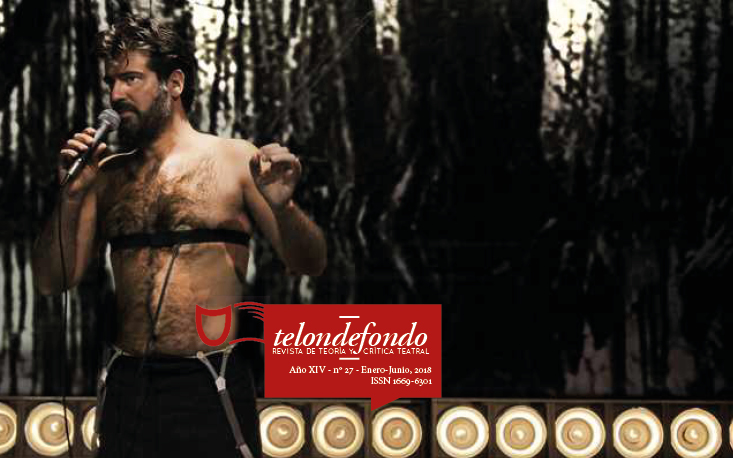Killing the Other in 21st Century Argentine Theatre. Following Rodrigo Cuesta's Trail on the Crime Scene
Abstract
Distrust invades the reader of Matar al Otro (Killing the Other), written by Rodrigo Cuesta. From the intrigue’s discontinuity, an insistently suspicious reading emerges, as a result of a smart manipulation of language that, disguised as a laughable and innocent game, kidnaps any possibility of rearranging of the parts until the end. Unable to fully interpret the events, readers are subjected to a process of double inquiry. While trying to put together the dispersed, superposed and repetitive fragments of the scene and to deal with the ambiguities, hesitations and dialogic isolation between the characters, the readers must gather and select information that can help them to solve the quandary, assuming an investigatory role, in a sort of police or “detective theater”, which seems to distance itself from most Argentine post-avant garde theater. Inserted in a trilogy that explores forms of distrust in human relations, the analyzed work displays factors that reveal the substance of terror and scorn towards the strange and sinister Other. A socioeconomic regime that annuls the erotic experience of the One (oneself), expressing a predominance of Ares –and not of Eros, as Byung Chul- Han points out- and that annihilates the Other, while simultaneously destroying the One. In a depressive narcissistic society, fear and hate establish the axis of this weak tower, which threats to crumble tragically and vertiginously.Downloads
Los autores/as que publiquen en esta revista aceptan las siguientes condiciones:
-
Los autores/as [traductores] conservan los derechos de autor y ceden a la revista el derecho de la primera publicación, con el trabajo registrado con Licencia Creative Commons Atribución-NoComercial-CompartirIgual 4.0 Internacional, que permite a terceros utilizar lo publicado siempre que mencionen la autoría del trabajo y a la primera publicación en esta revista.
-
Los autores/as pueden realizar otros acuerdos contractuales independientes y adicionales para la distribución no exclusiva de la versión del artículo publicado en esta revista (p. ej., incluirlo en un repositorio institucional o publicarlo en un libro) siempre que indiquen claramente que el trabajo se publicó por primera vez en esta revista.
-
Se permite y recomienda a los autores/as a publicar su trabajo en Internet (por ejemplo en páginas institucionales o personales).











